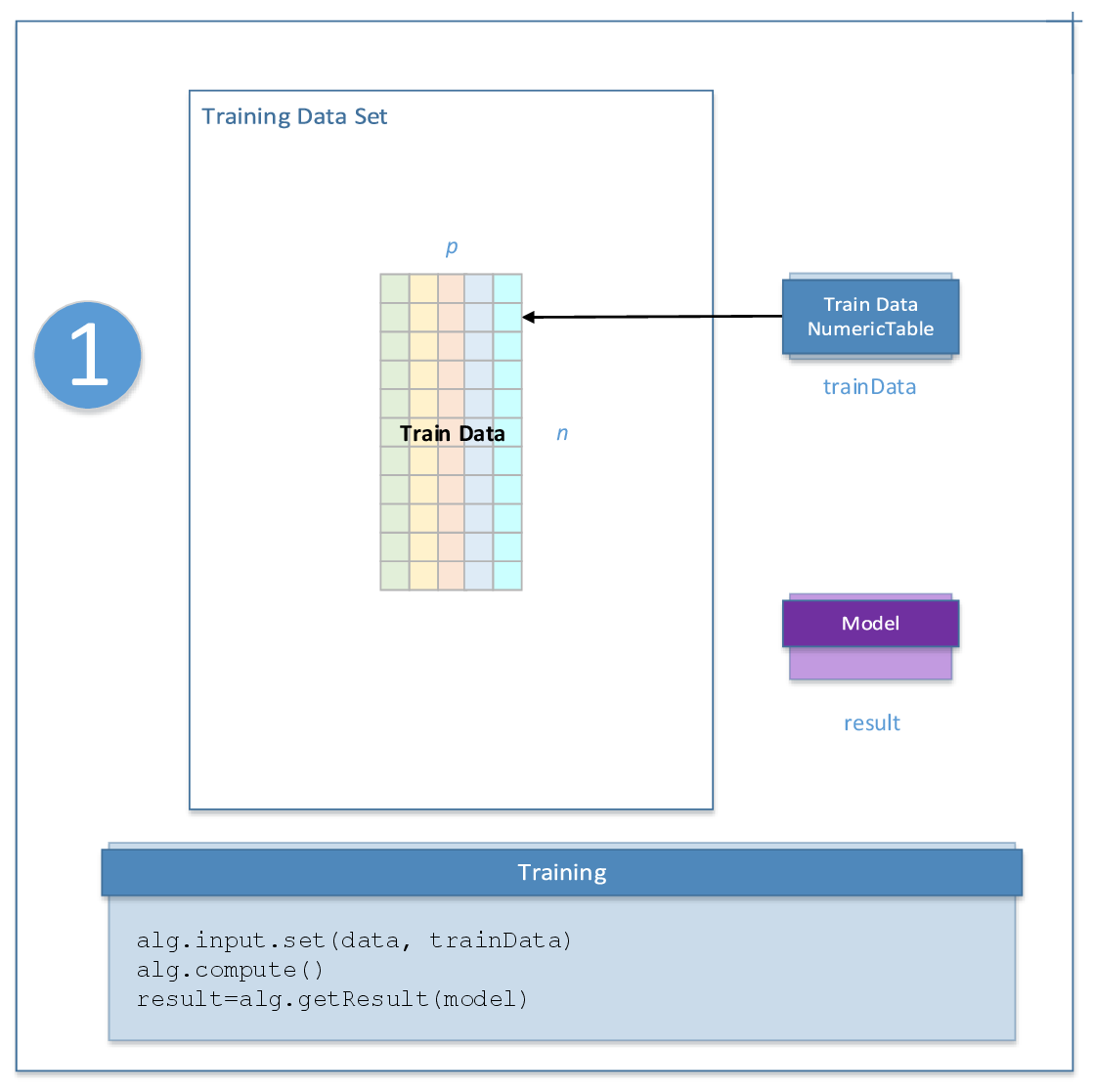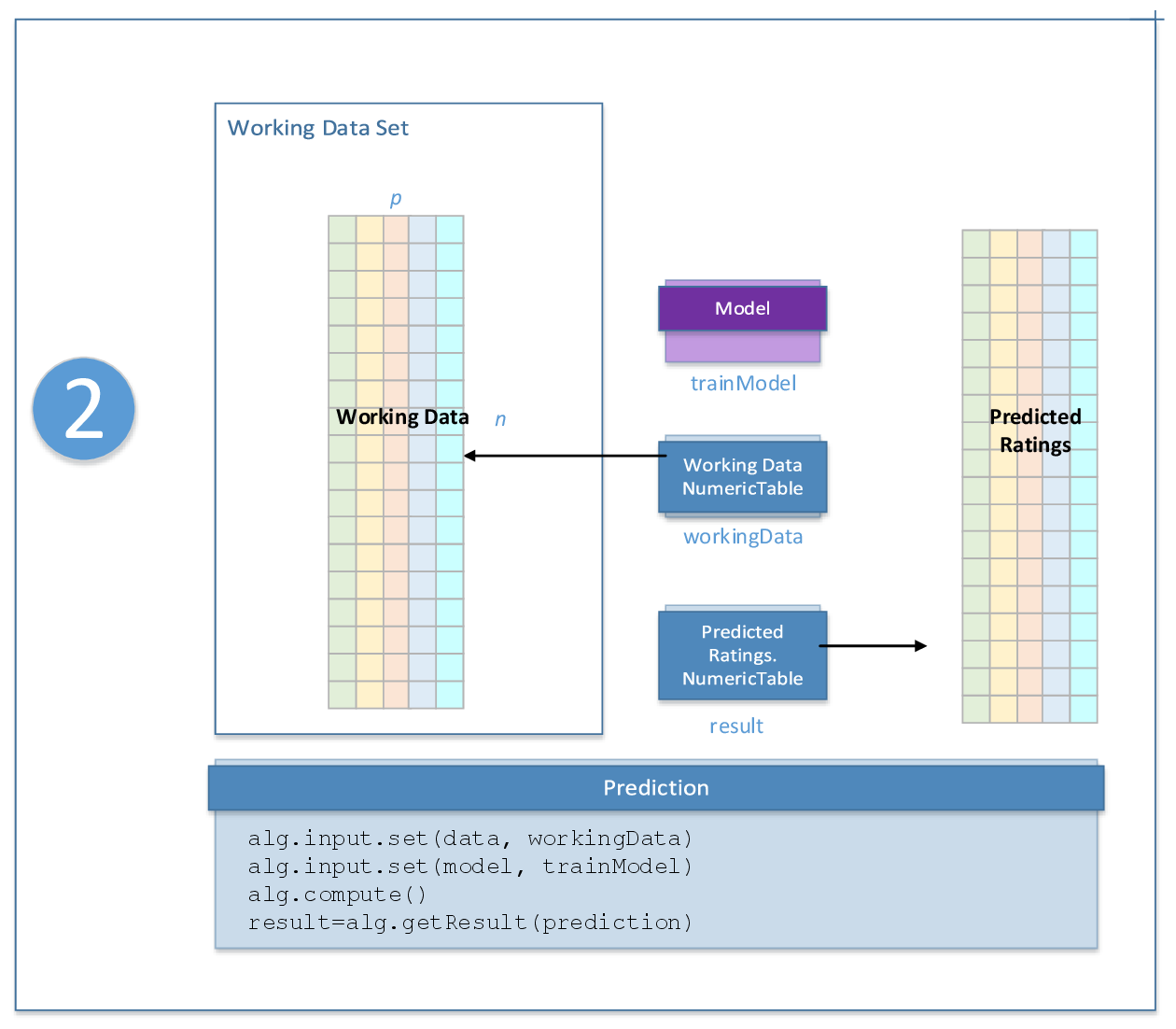Recommendation Systems Usage Model#
A typical workflow for methods of recommendation systems includes training and prediction, as explained below.
Algorithm-Specific Parameters#
The parameters used by recommender algorithms at each stage depend on a specific algorithm. For a list of these parameters, refer to the description of an appropriate recommender algorithm.
Training Stage#

Recommendation Systems Usage Model: Training Stage#
At the training stage, recommender algorithms accept the input described below.
Pass the Input ID as a parameter to the methods that provide input for your algorithm.
For more details, see Algorithms.
Input ID |
Input |
|---|---|
|
Pointer to the \(m \times n\) numeric table with the mining data. Note This table can be an object of any class derived from |
At the training stage, recommender algorithms calculate the result described below.
Pass the Result ID as a parameter to the methods that access the results of your algorithm.
For more details, see Algorithms.
Result ID |
Result |
|---|---|
|
Model with initialized item factors. Note The result can only be an object of the |
Prediction Stage#

Recommendation Systems Usage Model: Prediction Stage#
At the prediction stage, recommender algorithms accept the input described below.
Pass the Input ID as a parameter to the methods that provide input for your algorithm.
For more details, see Algorithms.
Input ID |
Input |
|---|---|
|
Model with initialized item factors. Note This input can only be an object of the |
At the prediction stage, recommender algorithms calculate the result described below.
Pass the Result ID as a parameter to the methods that access the results of your algorithm.
For more details, see Algorithms.
Result ID |
Result |
|---|---|
|
Pointer to the \(m \times n\) numeric table with predicted ratings. Note By default, this table is an object of the |

